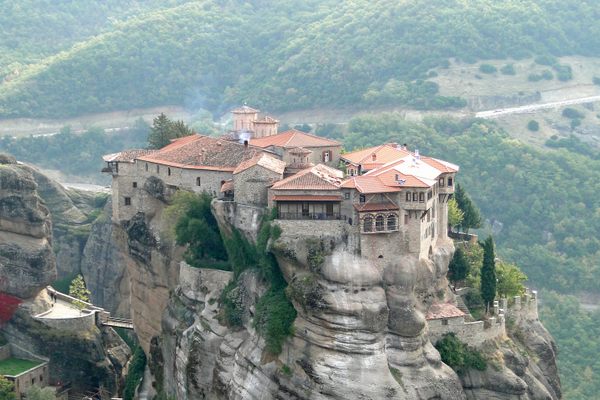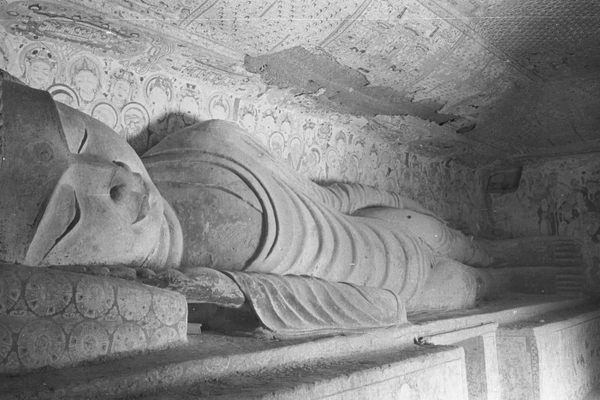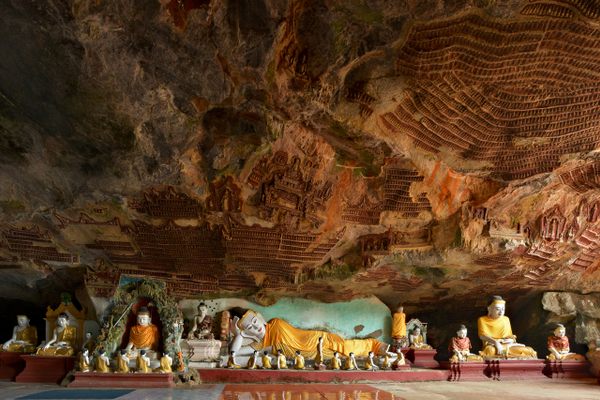Climbing Meteora, a Dramatic World Suspended in the Sky
Hardly known by most visitors of Greece, Meteora sits almost smack bang in the middle of the country, little disturbed by the tens of thousands who flock to the country’s capital and its famous islands every day.
A typical monastery of Meteora (all photographs by the author)
Meteora means “middle of the sky,” “suspended in the air,” or “in the heavens above.” The most obvious attraction of Meteora is its 24 monasteries which seem to be “suspended in the air,” but are actually perched atop dramatic rock pinnacles formed by earthquakes and weathered by water and wind over millions of years.
For the very few tourists who do visit the area, most are amazed at how little visited this amazing landscape is. It almost appears as if the Greek people are trying to keep Meteora secret as to not bring on an onslaught of tourists who may spoil its surreal tranquility.
Travelers who do visit the area usually do so just for one night on a whim after hearing about Meteora from a local Athenian, or seeing photographs of the infamous floating monasteries on postcards.
One night is enough to visit several of the still active floating monasteries. However, I was lucky enough to explore the area a little more thoroughly over two nights and three days in October of 2013, taking some photographs of this seemingly magical place using the nearby town of Kalambaka as a base.
Because of the extra time, I found more than just the famous floating monasteries. The Meteora area also has spectacular hikes, ruins, caves, abandoned places, and ancient hermit dwellings.
A map of Meteora
Apart from the obviously functioning monasteries of Meteora, there are some less evident, hidden places of worship hidden. The hiking map of Meteora above will help you hunt out some of these places, however some are unmarked and others require rock climbing and/or bouldering to reach.
The town of Kastraki with the iconic Meteora landscape surrounding it. This is the landscape that hides abandoned places and humble spaces of worship.
One small place of worship can be found atop the rock pinnacle of “Agion Pnevrna” (the large rocky mountain pictured above). The way to the top can be reached by a trail which starts in the northeast of the small town of Kastraki below. It requires a bit of climbing, bouldering, and mountain goat-dodging to reach, but has some great views along the way.
The place of worship atop “Agion Pnevrna”
Once you reach the place of worship on Agion Pnevrna, you can also take a few steps to the south, climb a tree, and jump up to a rock ledge to reach a cross and bell which provides a great view of the area. For the really daring, the next rock pinnacle in front of the bell can be reached via some precarious wooden and rock ladders.
The bell and lookout which can be reached by climbing a nearby tree
From multiple viewpoints in the area you can spot an interesting ruin at the foot of “Kabana” to the northwest. Upon closer inspection it appears to be an abandoned farm which at one time used the natural cave formation to its advantage. From this ruined farm, it is easy to spot multiple caves and dwellings in the distance which are only accessible by rock climbing.
The abandoned farm below “Kabana” as seen from a distance
A closer inspection of the abandoned farm houses & cave dwelling
Some of the ruins & caves only accessible by rock climbing
There is however one accessible cave which contains some dwelling ruins high above on the North side of the rock pinnacle called “Kumaries”. There is no actual trail to reach the cave, but some carful bush walking will bring you to the cave entrance. The old hermit dwellings up in the roof of the cave are easily visible even from a distance.
An accessible cave complete with wooden hermit dwellings in the roof
At the time of writing, the field directly in front of this cave opening contained an abandoned rusted out Volkswagen Kombi van. It’s a little tricky to access because of some thorn bushes, but it can provide some great photos if you can reach it.
The abandoned Volkswagen Kombi van in a field directly in front of the accessible cave.
A close up of the rusted-out shell of the Volkswagen Kombi van with a monastery in the background
After hiking around, you might actually feel the urge to visit one of the functioning floating monasteries. Most of them are open to the public. Some are bigger than others and they alternate their opening times to allow the Monks to still use the monasteries for their intended purpose. Keep in mind that if you are wearing clothing that does not cover your knees, then you may not be allowed to enter the monasteries or have to wear a provided garment, so plan accordingly.
I decided to visit the holy monastery of Great Meteoron, which is the largest and most visited of the monasteries and dates back to 1340 AD. I chose this one because it contains a room full of the bones and skulls of some of the previous monks who lived in the monastery. The monastery also serves as a museum and gives you an insight about daily life and the history of Meteora.
The bones and skulls inside the holy monastery of Great Meteoron
If the weather has been good to you and you fancy finding a good spot to watch the sunset, the best places are along the upper road to the East of the Roussanou Nunnery. There is a panorama lookout point not too far from the Nunnery where you can get a good view of some of the monasteries and the spectacular landscape.
The view from the lookout near the Roussanou Nunnery
Another great spot is to the east of the Agia Trias Monastery at a point called the “Kalambaka Towers.” If you are feeling a bit daring you can climb up some of the rocks and get a great view of the town of Kalambaka below and the surrounding landscape as the sun sets in front of you. Just make sure you leave enough time to climb down safely before it gets too dark.
The view from the Kalambaka Towers lookout point
Another trail which I recommend runs past some ancient hermitages and other interesting dwellings and places of worship. The trail starts between Marino and Ambaria and hugs the pixari cliffs. The trail takes you past some unique monasteries which are actually built into caves in the cliffs as well as plenty of hermitages constructed in caves at both at ground level and in the rocky cliffs above.
One of the ground level dwellings which you can access easily
A monastery built directly into a cave in the rocks
Some more raised hermit dwellings which are scattered through the area
If you continue following this trail and take a right past the Agios Nikolaos church, you will end up in a valley behind Pixari and Agia where you will come across the rocky pinnacle named Roka. From “Roka” there are several trails leading outward but unfortunately without proper climbing equipment none of them will allow you to continue past the surrounding rocks or to reach the religious ruins perched on top of Agia, Alissos or Modestos.
The valley is still worth the views and there is a chance you might come across some tortoises wandering around the valley, too.
The valley which contains the Roka pinnacle… and tortoises!
There are plenty of other trails, caves, and monasteries which you can explore, not to mention the history. Hopefully this has given you an idea of some of the slightly more obscure places you can find in this seemingly magical place. I would advise exploring the area alone to truly appreciate how peaceful the area is.
All photographs by Chris Staring.
Find more of Chris Staring’s photography at www.chrisstaring.com or his Instagram account @SkareMedia.






























Follow us on Twitter to get the latest on the world's hidden wonders.
Like us on Facebook to get the latest on the world's hidden wonders.
Follow us on Twitter Like us on Facebook